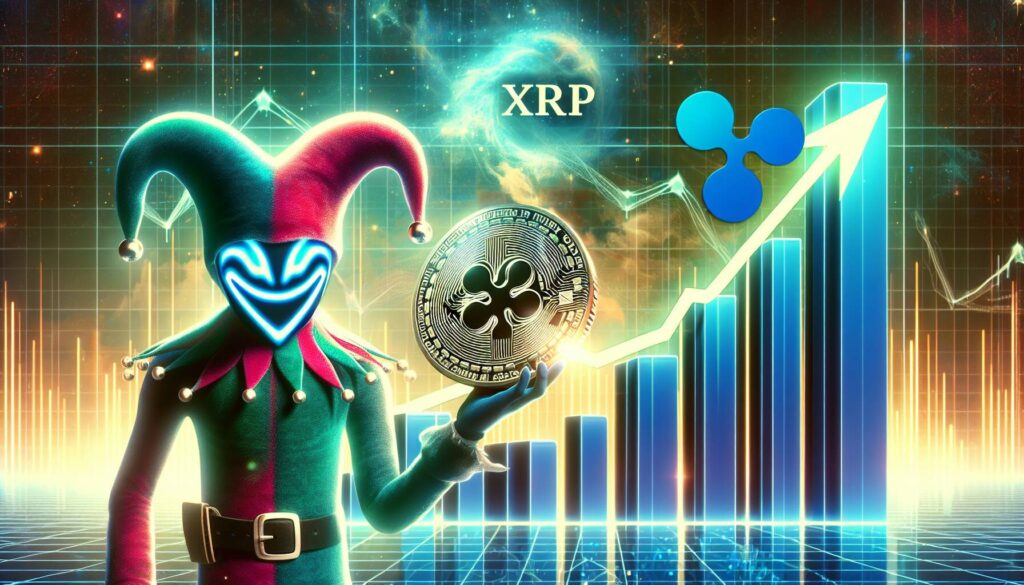XRP, the digital currency associated with the XRP Ledger (XRPL), has recently been under the spotlight as advocates tout its potential as a rapid and cost-effective option for international payments. However, recent data prompts a deeper inquiry into the actual activity taking place on this blockchain network. Since the election of Donald Trump in November 2024, XRP’s daily transfer volume has surged significantly, averaging an impressive $2.28 billion, a stark contrast to the previous range of $300 million to $1 billion.
As reported by Glassnode, while this spike in volume illustrates increased network participation, it may not necessarily indicate true adoption rates or active use for payments. Many of these transactions are likely influenced by speculative trading, large-scale transfers by Ripple itself, and movements from significant holders, commonly referred to as “whales.” For example, Chris Larsen, a co-founder of Ripple, recently completed substantial sales, including a notable transfer of 50 million XRP worth approximately $29 million.
“XRP’s rising transfer volume may be connected more to market speculation than widespread adoption of its payment solutions.”
Ripple has a history of managing its XRP holdings through an escrow mechanism designed to stabilize market supply. However, their strategic sales often correlate with bullish market conditions. In contrast, Bitcoin and Ethereum continue to lead in daily volume, with Bitcoin averaging around $23.26 billion and Ethereum at approximately $2.53 billion. These figures highlight their broader acceptance and ongoing usage within the cryptocurrency ecosystem.
While XRP’s network activity shows notable spikes, suggesting it plays a role during certain trading cycles, Ripple’s efforts to popularize XRP for cross-border transactions have not yet translated into consistent real-world applications. Despite the introduction of innovative features on the XRPL, including stablecoin support and EVM compatibility, usage levels still fall short when stacked against major players like Bitcoin and Ethereum.
In summary, while XRP’s recent transaction volumes paint a picture of heightened activity, contextual factors suggest a more complex landscape, riddled with speculative dynamics rather than solid usage as a mainstream payment solution.
XRP Daily Transfer Volumes and Market Dynamics
The following key points summarize the important aspects of XRP’s recent market activity and its implications for readers:
- XRP’s Daily Transfer Volume:
- XRP’s daily transfer volume has surged, especially post-Trump’s reelection, averaging around $2.28 billion daily since November 2024.
- Speculative Behavior:
- Increased volumes may not reflect true adoption but are influenced by speculation, Ripple-related transfers, and significant movements by large holders.
- Ripple’s Large Token Sales:
- Ripple and co-founder Chris Larsen have been responsible for significant sales of XRP, with sales in 2024 and 2025 totaling over $116 million.
- These token sales have impacted the overall market activity and contributed to the daily volume spikes.
- Comparison with Other Cryptocurrencies:
- Bitcoin and Ethereum maintain a stronger presence in the market, with average daily volumes of approximately $23.26 billion and $5.67 billion, respectively.
- This disparity suggests that XRP lacks the same level of broad adoption and trust compared to other major cryptocurrencies.
- Real-Life Usage Metrics:
- Transfer volume serves as an indicator of real-world usage and adoption on the blockchain, with XRP’s activity heavily influenced by trading cycles rather than enterprise use.
- Innovations in XRP Ledger (XRPL):
- XRPL has introduced functionality for stablecoin issuance and EVM compatibility, indicating efforts to broaden its utility but has yet to match the volume levels of Bitcoin and Ethereum.
Understanding XRP’s market dynamics is essential for investors and users considering the crypto landscape, especially in determining the viability and adoption of the XRP Ledger compared to larger, more established networks.
XRP’s Growing Transfer Volumes: A Deeper Dive Amidst Competitive Landscape
The recent surge in XRP’s daily transfer volumes, especially following the political shift in the U.S., has generated significant conversations in the cryptocurrency community. However, a closer examination reveals both competitive advantages and potential pitfalls in comparison to other major cryptocurrencies, particularly Bitcoin and Ethereum. While XRP stands out with remarkable reported volumes ranging from $300 million to $2.28 billion daily, these figures are heavily influenced by whale movements and Ripple’s own token sales rather than broad adoption for real-world transactions.
Competitive Advantages: One of XRP’s key strengths lies in its strategic positioning for cross-border payments, promoting itself as a fast and cost-effective alternative to traditional financial systems. The enhancements brought to the XRP Ledger, including support for stablecoin issuance and automated market makers, signal innovation that could attract enterprise users in the long run. Furthermore, its ability to process transactions quickly and at lower fees than Bitcoin and Ethereum makes it appealing for immediate financial applications.
Competitive Disadvantages: In stark contrast, Bitcoin and Ethereum continue to overshadow XRP in terms of consistent daily transfer volumes, boasting figures around $23.26 billion and $5.67 billion, respectively. This disparity highlights XRP’s dependency on speculative trading cycles primarily driven by Ripple’s operations. While XRP’s recent volume spikes are noteworthy, they do not indicate sustained user engagement or acceptance but suggest a reliance on market volatility and the movements of significant holders. Additionally, XRP’s position is complicated by ongoing regulatory scrutiny and its resultant hesitance among potential enterprise adopters.
This landscape creates both opportunities and challenges for various stakeholders in the crypto ecosystem. For investors and traders, XRP’s volatility may present short-term trading profit opportunities, especially during speculative periods. However, institutional players may find the unpredictability and regulatory uncertainties surrounding XRP to be significant deterrents, prompting them to gravitate toward the more established Bitcoin and Ethereum networks known for their robustness and broad acceptance. Enterprises considering blockchain solutions may also hesitate, opting for the relative stability and innovative ecosystems of leading platforms instead.
In summary, while XRP is attempting to carve out a niche in the cross-border payment space, the competitive realities underscore a complex scenario where innovation is essential for capturing sustained interest. As it navigates these waters, XRP must not only showcase its technical capabilities but also work towards building lasting partnerships and addressing regulatory challenges to truly thrive in an increasingly crowded market.
















